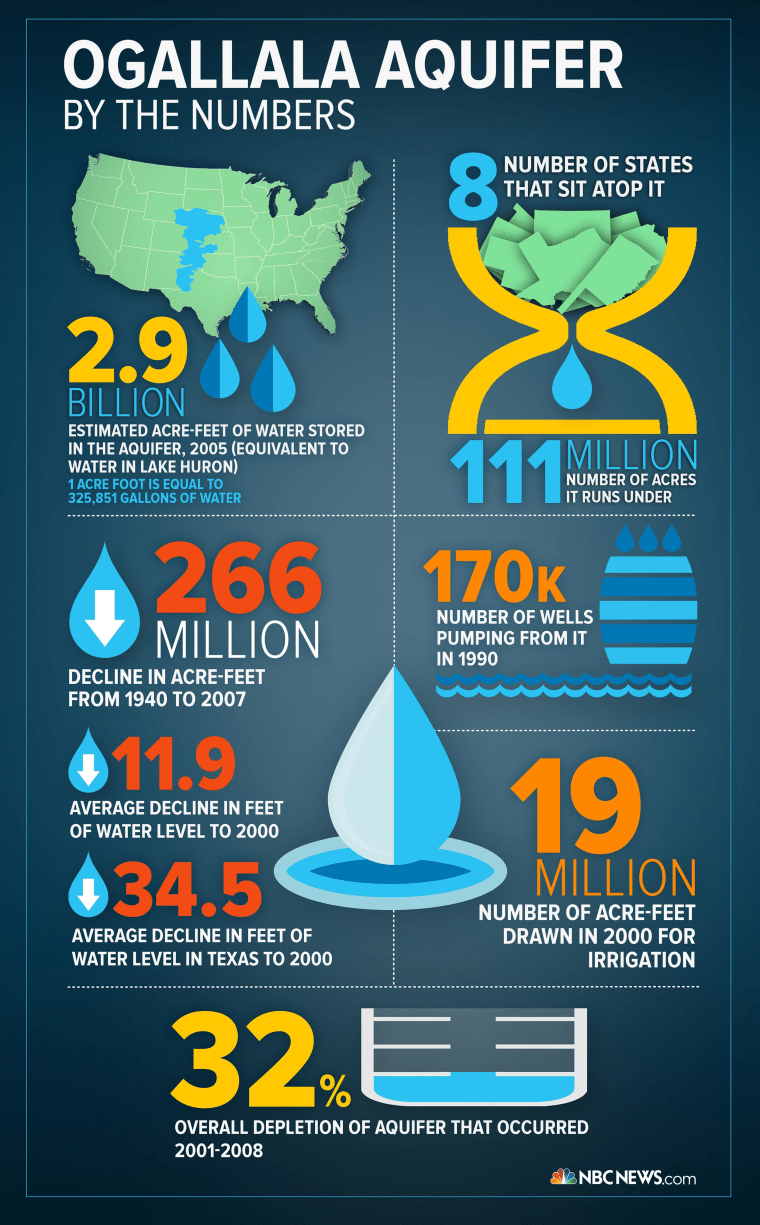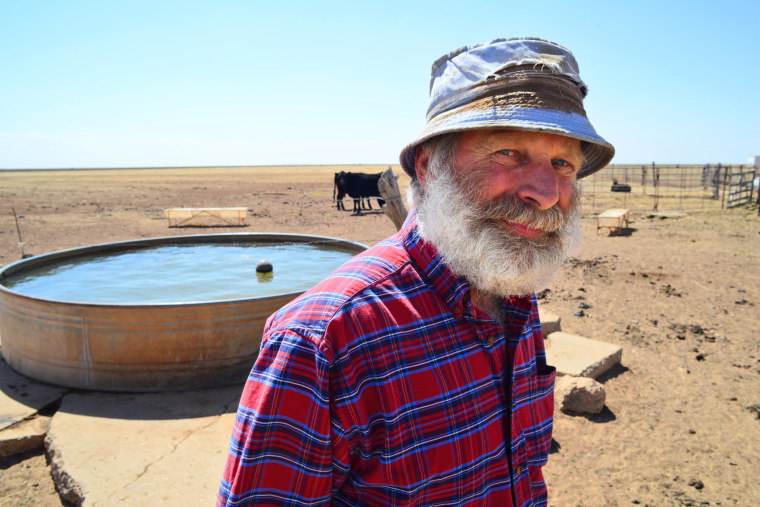Editor's note: This story is one in a series on a crisis in America's Breadbasket –the depletion of the Ogallala Aquifer and its effects on a region that helps feed the world.
VEGA, Texas–While a high-pitched wind rattles the windows, and assaults a flapping, fraying American flag in the front yard, Lucas Spinhirne knows he’s staring into an abyss that many in Texas—and across the world—may be forced to contemplate.
The once bounteous quantities of water that flowed under his farmland in the Texas Panhandle are a distant memory–pumped to the last drop. Now there is only one source of water for his wheat and sorghum: the sky above. “We try to catch anything that falls,” Spinhirne says.
The scope of this mounting crisis is difficult to overstate: The High Plains of Texas are swiftly running out of groundwater supplied by one of the world’s largest aquifers – the Ogallala. A study by Texas Tech University has predicted that if groundwater production goes unabated, vast portions of several counties in the southern High Plains will soon have little water left in the aquifer to be of any practical value.
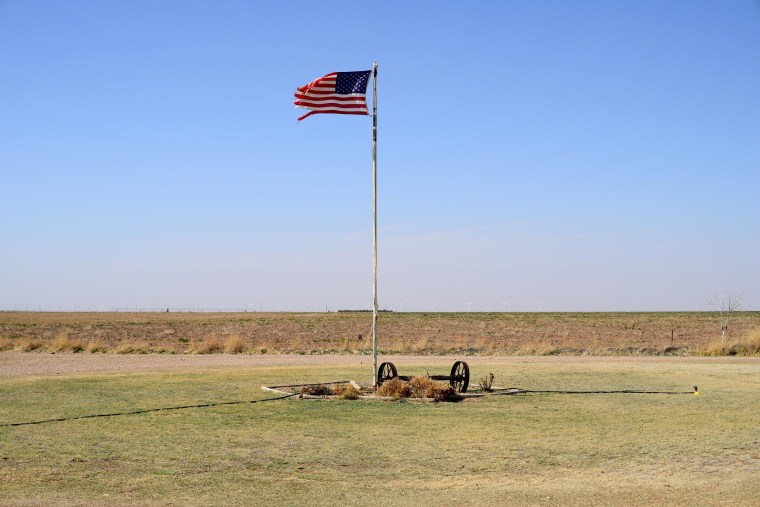
The Ogallala Aquifer spreads across eight states, from Texas to South Dakota, covering 111.8 million acres and 175,000 square miles. It’s the fountain of life not only for much of the Texas Panhandle, but also for the entire American Breadbasket of the Great Plains, a highly-sophisticated, amazingly-productive agricultural region that literally helps feed the world.
This catastrophic depletion is primarily manmade. By the early eighties, automated center-pivot irrigation devices were in wide use – those familiar spidery-armed wings processing in a circle atop wheeled tripods. This super-sized sprinkler system allowed farmers to water crops more regularly and effectively, which both significantly increased crop yields and precipitously drained the Ogallala.
Compounding the drawdown has been the nature of the Ogallala itself. Created 10 million years ago, this buried fossil water is–in many places—not recharged by precipitation or surface water. When it’s gone, it’s gone for centuries.
If the American Breadbasket cannot help supply ever-growing food demands, billions could starve.
“This country became what it became largely because we had water security,” says Venki Uddameri, Ph.D., director of the Water Resources Center at Texas Tech. “That’s being threatened to a large degree now.”
With the world population increasing, and other critical global aquifers suffering equally dramatic declines, scientists acknowledge that if the American Breadbasket cannot help supply ever-growing food demands, billions could starve.
“The depletion of the Ogallala is an internationally important crisis,” says Burke Griggs, Ph.D., consulting professor at the Bill Lane Center for the American West at Stanford University. “How individual states manage the depletion of that aquifer will obviously have international consequences.”
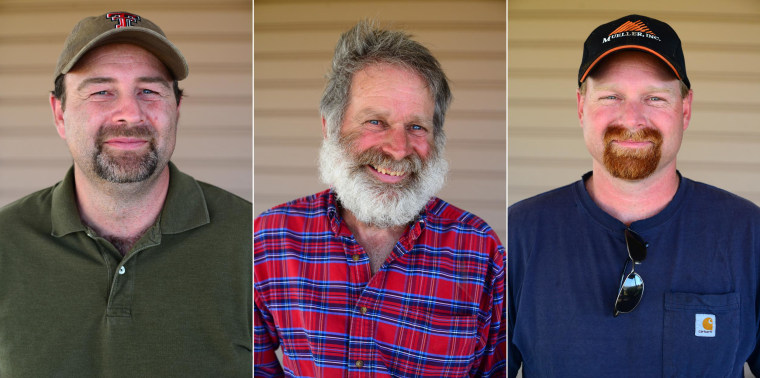
The Spinhirne farm is west of Amarillo, not far from Cadillac Ranch – that classic roadside attraction with 10 versions of the luxury car potted tail up. It’s a hostile landscape of swirling dust tornadoes, baked soil, skin-chapping air without a shred of humidity.
Needing to maximize rainfall, and with the soil ready to be swooped away by constant prairie winds, the Spinhirnes– like all dryland farmers on the Plains, who work without irrigation–carefully groom their land with a kind of agricultural artistry. They poke thousands of small holes to create dikes that capture and hold water, and they craft rows of dirt clumps and earthen walls to keep the ground from going airborne.
But still, the dirt swirls—it’s officially year four of a punishing drought that many say is even worse than the Dust Bowl days of the 30s.
Bruce Spinhirne, Lucas’ brother, shows a visitor a recent photo of the city of Lubbock, two hours away, about to be enveloped in a monstrous cloud of dust. “All of a sudden, the whole sky got an orange hue to it,” says Bruce, who works on new breeds of drought-resistant corn for DuPont Pioneer. “That’s the worst, because the smaller particles of your soil get picked up and moved away. Those are the things that hold your water, help you with fertility.”
Scenes like that are what make farmer Dale Artho, a friend and neighbor of the Spinhirnes’, say there’s little point discussing doomsday predictions by climate scientists. Doomsday, he’ll tell you, has already happened in Vega – in the summer of 2011.
“It was June 26,” Artho says. “We were 114 degrees, with winds 40 to 50 miles per hour. The corn just turned white. The water that was in the plant – it just bleached it. It was ugly.”
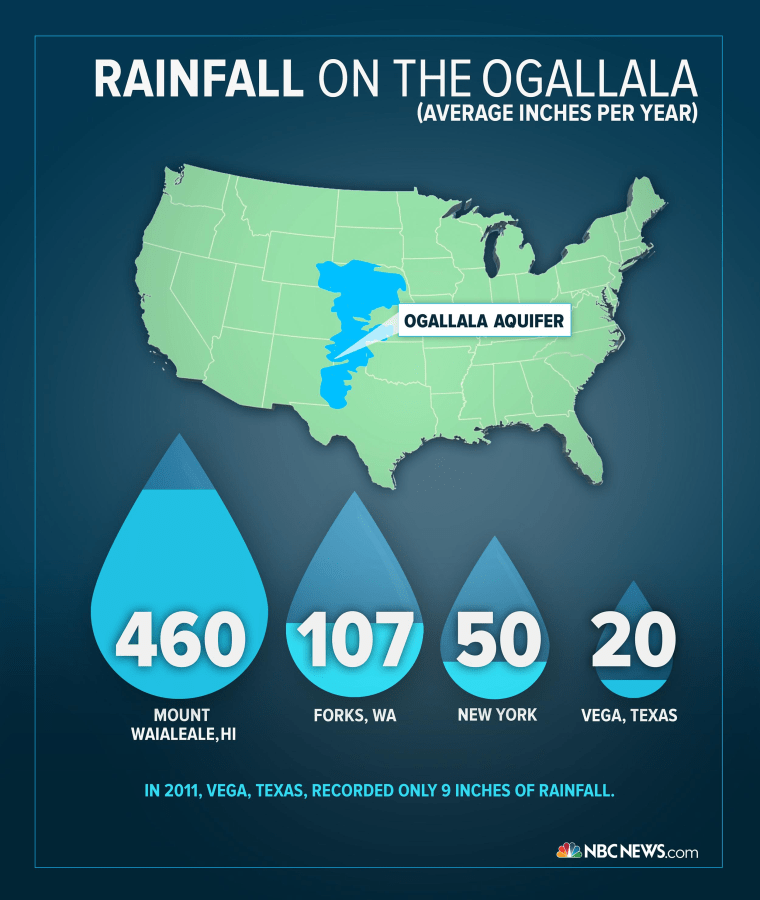
In the Texas Panhandle, the race to survive a frightening new normal is well underway.
“We’re headed for a brick wall at 100 miles per hour,” says James Mahan, Bruce Spinhirne’s father-in-law and a plant physiologist at the USDA’s Agricultural Research Service lab in Lubbock. “And, really, the effects of climate change are branches hitting the windshield along the way.”
For Lucas Spinhirne, the greatest casualty of losing his Vega farm would not be economic, but intangible – the loss of a deeply-embedded and deeply-enriching sense of community.
“In high school, we had a neighbor of ours who lost his wife,” he says. “And that day we all showed up. Everybody planted his wheat, cut his corn, and most every bit of his farming got done in one day. In the city, people will help you out some. But they’re not going to do everything you have to do in the next couple of months in one day.”
The ubiquitous Lone Star state flag testifies to how much Texans value their independence. This sentiment is also reflected in the state’s water law, based on the concept of “right to capture.” In short, if you own the land, you and only you own the water.
No other state’s water law allows such unfettered individual control. The danger, especially apparent as the Ogallala disappears, is that it favors an individual motivated to turn a profit in the present day above community needs of the future.
The Texas law allowed billionaire oil tycoon T. Boone Pickens to sell trillions of gallons of Ogallala Aquifer water beneath 211,000 acres surrounding his majestic Mesa Vista ranch, in Roberts County, near the Texas-Oklahoma border. In 2011, the now 85-year-old sold his water rights for $103 million to 11 water-impoverished cities nearby, including Lubbock and Amarillo.
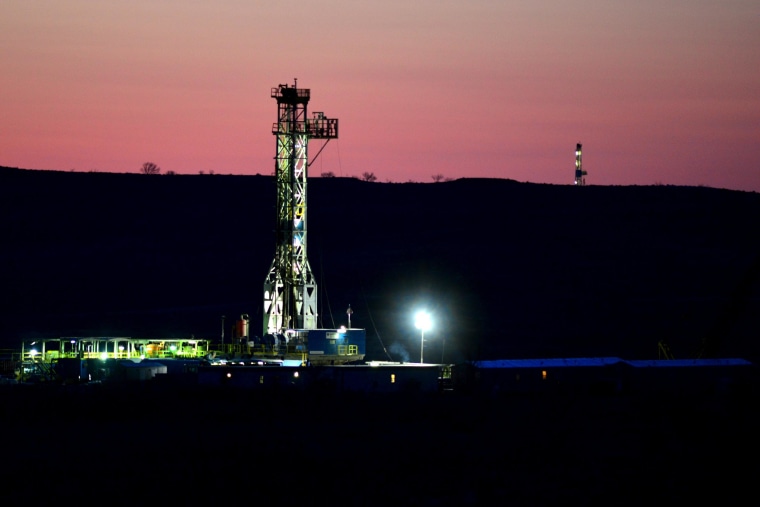
“Here’s a guy selling a natural resource which is almost universally recognized – except in Texas – as a public resource,” says Griggs.
Another outcome of the right-to-capture philosophy underlies the seemingly tardy conservation efforts of the High Plains Water District, the largest in Texas, encompassing 16 counties.
Elsewhere, particularly in Kansas, farmers irrigating where the Ogallala is shallowest are required to meter their wells, observe water-use restrictions, and are fined for not doing so.
Landowners in the HPWD – even today – can choose to suck their portion of the Ogallala dry any time they like.
Finally, some 63 years after its birth, the water district does expect to have mandatory restrictions in place by the end of the year. Meanwhile, travelers to this region confront a procession of collapsing communities.
In the ghostly town of Earth, the Dairy Queen is pockmarked as if in a war zone. Tiny Lockney -- population 1,900 and running out of water – recently had to buy 82 acres of nearby Ogallala-fed land for $605,000. In Plainview, the double dose of drought and the diminishing Ogallala caused the closing of the Cargill beef-processing plant, eliminating 2,000 jobs.
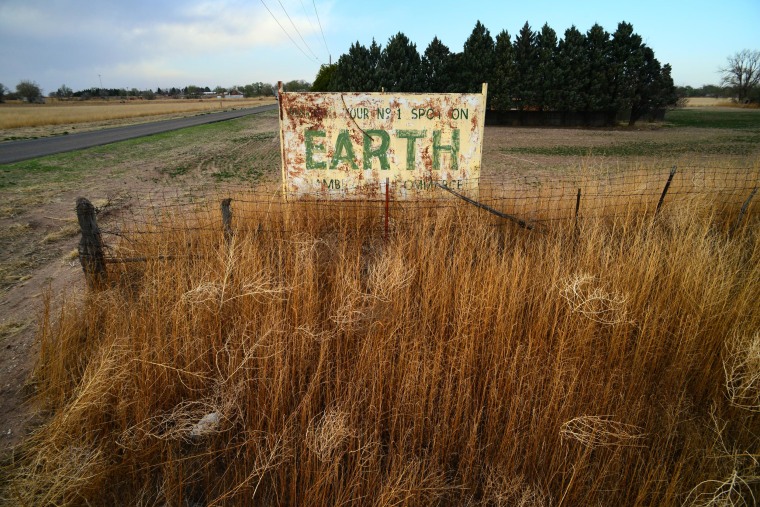
“The last 50 years, we haven’t been proactive enough with water conservation,” says Glen Schur, whose farm is within a few miles of the closed Cargill plant in Plainview.
Though one part of this Texas story is truly terrifying, Schur represents another way forward, by embracing technological advances and displaying bottom-up leadership.
“The majority of us wish the water district would just set the rules,” he says. “Let’s get them adopted. It’s less than 10 percent of the producers who are opposed.”
The HPWD will likely mandate that its farmers limit their irrigation to 18 inches a year. That won’t be a problem for Schur. He’s been radically conserving water for years. In part, it’s so his son Layton – studying agriculture at Texas Tech – will have water to pump when he takes over the business.
“It’s not only our livelihoods. The rest of the world is relying on us.”
Schur is also typical of a generation of wired farmers geared for relentless adaptation. He operates the largest production-made machinery on the planet; can control his irrigating systems remotely on his mobile device, even thousands of miles away; and he knew instantly that his wheat crop gained value when Russia annexed Crimea.
As a willing guinea pig for the USDA lab in Lubbock, a kind of space program for agriculture, Schur uses a digital, infrared thermometer for plants developed there. As with humans, a plant’s temperature is a fundamental indication of its health – and by extension, its day-to-day water requirements.
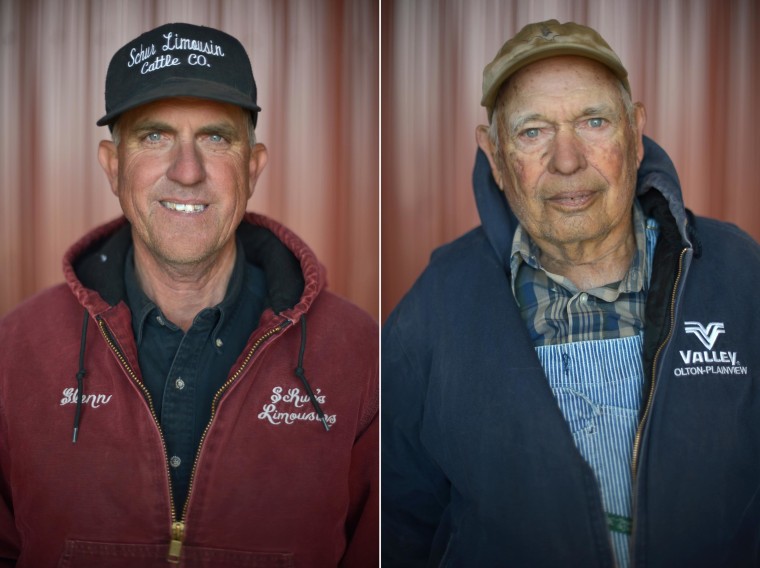
The lab works in tandem not only with farmers, but also freely shares all of its work with private enterprise. The infrared technology began as a small, speculative $60,000 government project; it’s now a multi-million dollar business called Smartfield.
“Right now, we’re producing a whole lot more grain, and a whole lot more cotton in the High Plains of Texas with less water than what we had,” Schur says. “And with the adaptation of new technology, we’re finding new and better ways to produce more food with less water.”
“It’s not only our livelihoods,” he says. “The rest of the world is relying on us.”
In Texas, as the last drops are being pulled from the Ogallala and years of desert-like conditions persist, farmers are fighting back with every tool the digital age can provide. But what’s truly keeping them on the land is a bottomless well of resilience.
“We got our faith in the Good Lord,” says Schur. “He’s the one who provides. He’s the one who determines what we’re going to make … But, you know, he’s certainly testing our patience.”
With additional reporting by Gil Aegerter.
